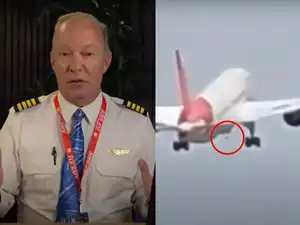In a significant development that could help solve the mystery behind the recent fatal Air India Boeing 787-8 Dreamliner crash in Ahmedabad, renowned American aviation expert and former US Navy pilot Captain Steve Scheibner has revised his initial assessment of the incident.

Earlier, Scheibner had suggested that a possible pilot error — specifically, the improper setting of the aircraft’s flaps — might have contributed to the tragedy. He had also speculated that a bird strike or fuel contamination could not be ruled out as possible causes for an engine malfunction.
However, after analyzing a clearer video recording that recently surfaced, Scheibner has now presented a new theory pointing to a more serious issue: a dual engine failure immediately after takeoff. The video, captured from a rooftop near the crash site, provides both visual and audio evidence that, according to him, strongly supports this updated conclusion.
According to Scheibner, the footage clearly shows that the aircraft’s Ram Air Turbine (RAT) — an emergency power-generating device that automatically deploys when a plane loses its main power sources — was activated right after takeoff. This is an unusual and concerning sign, as the RAT generally deploys only in extreme situations when both engines fail and the aircraft loses electrical and hydraulic power from the engines.
Scheibner emphasized that such deployment indicates a severe loss of power, leaving pilots with very limited options. A dual engine failure just after takeoff is considered one of the most critical emergencies in aviation because it gives pilots very little altitude or time to attempt a safe return or an emergency landing.
He further explained that while modern jets like the Boeing 787 Dreamliner are designed with multiple redundancies to prevent total engine failure, factors like a severe bird strike to both engines, simultaneous fuel contamination, or even a rare mechanical fault could still trigger such an event.
This revised theory has added a new dimension to the ongoing investigation. Aviation authorities are now expected to thoroughly analyze the flight data recorders and cockpit voice recorders to verify these findings and determine what exactly caused such a catastrophic incident.
Meanwhile, this tragic crash has heightened concerns among passengers and aviation safety experts worldwide, prompting calls for stricter checks and better monitoring of aircraft maintenance and fuel quality.
Scheibner concluded his statement by emphasizing that while pilot error cannot be completely ruled out yet, the evidence strongly points toward a mechanical or operational failure that led to both engines shutting down unexpectedly. He also extended his condolences to the families of the victims and urged the airline and regulatory authorities to share the investigation results transparently to help prevent such disasters in the future.